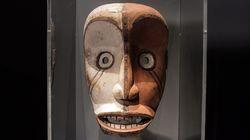The Cult of Progress

If David Olusoga's first film in Civilisations is about the art that followed and reflected early encounters between different cultures, his second explores the artistic reaction to imperialism in the 19th century. David shows the growing ambivalence with which artists reacted to the idea of progress – both intellectual and scientific - that underpinned the imperial mission and followed the Enlightenment and the Industrial Revolution. Advances in knowledge and technology imbued Europeans in the 19th century with a sense of their civilisation's superiority. It justified their imperial ideology. But it created among artists a deep fascinations with other civilisations which in turn produced a scepticism about their own. By contrast, as European artists questioned their civilisation's ‘advance', in America painters sought to capture an idea of their new nation's ‘manifest destiny' in landscapes. And in their representation of the Native Americans they sought to record for posterity the world and the cultures they were violently displacing. But this was not always the case.
David shows how in New Zealand one artist was co-opted by the Maori who used his sills to record their culture and celebrate their ancestors. As the 19th Century came to an end, the certainties of industrial and scientific advance were increasingly questioned; many artists (Gauguin and Picasso amongst them) turned to non-Western art and culture for inspiration. And in the face of the catastrophic conflict of the First World War, the idea that progress, reason and industrial advance were guarantors of higher ‘civilisation' was rejected.
David ends the film with a powerful meditation on Otto Dix's nightmarish and ironic evocation of the horror of the trenches, the triptych Der Krieg (The War).
Trailer
Recently Updated Shows

Celebrity SAS: Who Dares Wins for Stand Up to Cancer
In the first ever celebrity series of SAS: Who Dares Wins, 12 well-known faces embark on one of the toughest tests of their lives, to raise money for Stand Up To Cancer. They're living and surviving together in an unforgiving ex-military base, high in the Chilean Andes. From the recruits' very first challenge - a terrifying backwards dive out of a helicopter - Ant Middleton and his team of ex-special forces instructors are determined to show them that no allowances will be made for their celebrity status.

Lost Treasures of Egypt
An immersive, action-packed series follows international teams of Egyptologists as they unearth the world's richest seam of ancient archaeology — Lost Treasures of Egypt. Through excavations and unprecedented access to the teams on the front line of archaeology, we follow these modern-day explorers as they battle searing heat and inhospitable terrain to make the discoveries of a lifetime.

The Secret of Skinwalker Ranch
Gaining full and unprecedented access to one of the most infamous and secretive hotspots of paranormal and UFO-related activities on earth, The Secret of Skinwalker Ranch will feature a team of scientists and experts who will conduct a thorough search of this infamous 512-acre property located in Utah's Uinta Basin. They will attempt to find out the truth behind more than 200 years of mysteries - involving everything from UFO sightings and paranormal activities to animal mutilations and Native American legends of a shape-shifting creature known simply as The Skinwalker.

Saturday Night Live
Saturday Night Live is an Emmy Award-winning late-night comedy showcase.
Since its inception in 1975, "SNL" has launched the careers of many of the brightest comedy performers of their generation. As The New York Times noted on the occasion of the show's Emmy-winning 25th Anniversary special in 1999, "in defiance of both time and show business convention, 'SNL' is still the most pervasive influence on the art of comedy in contemporary culture." At the close of the century, "Saturday Night Live" placed seventh on Entertainment Weekly's list of the Top 100 Entertainers of the past fifty years.
